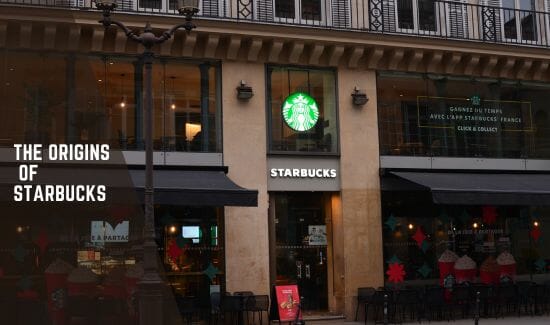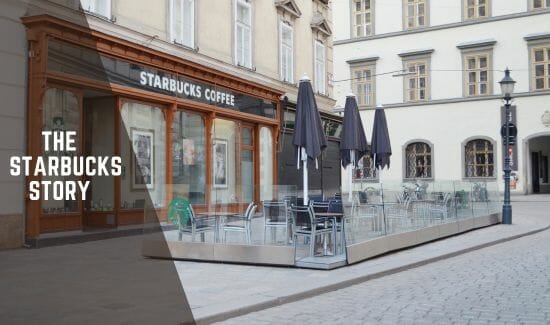
The Starbucks Story
From its humble beginnings in Seattle’s Pike Place Market in 1971, Starbucks has grown into a global powerhouse in the coffee industry. What started as a small store selling whole-bean coffee and accessories has now become a wide-ranging presence on street corners in cities around the world.
Central to Starbucks’ success is its commitment to quality. From the very beginning, the brand aimed to provide customers with a superior coffee experience, focusing on sourcing the finest beans and carefully roasting them to perfection. This dedication to excellence resonated with consumers, who soon became loyal Starbucks patrons. As the company expanded, so did its menu, offering a wide range of coffees, teas, and other beverages to cater to different tastes. This foresight in diversifying its offerings helped Starbucks establish its dominance in the industry and become a household name synonymous with premium coffee.

The Birth of the Starbucks Brand: A Vision for Quality Coffee
Founded in 1971 by three college friends, Jerry Baldwin, Zev Siegl, and Gordon Bowker, the brand initially aimed to provide Seattle residents with fresh, high-quality coffee beans. The trio’s passion for coffee led them to establish their first store in Seattle’s Pike Place Market, where they sourced beans directly from coffee growers and focused on roasting them to perfection.
Driven by their belief that quality is paramount, the founders sought to create a unique experience for coffee lovers. They strived to nurture a welcoming atmosphere in their store, fostering a sense of community for those who appreciated a good cup of coffee. This commitment to quality and creating a space where people could gather to enjoy it laid the foundation for the Starbucks brand. It is this vision that propelled the company’s growth and eventual conquest of the global coffee market.

Building a Unique Coffee Experience: Starbucks’ Store Design and Atmosphere
Starbucks has carefully crafted its store design and atmosphere to deliver a unique coffee experience to its customers. The company understands the importance of creating a space that not only serves as a destination for coffee lovers but also as a comfortable and inviting environment. The warm color palettes, cozy seating arrangements, and welcoming ambiance contribute to the overall appeal of Starbucks stores. Additionally, the aroma of freshly brewed coffee permeating the air adds to the sensory experience, enticing customers to stay and indulge in their favorite caffeine fix.
Furthermore, Starbucks takes pride in its attention to detail when it comes to store design. Each location is meticulously designed to reflect the local culture and the community it serves. This approach helps Starbucks in creating a sense of familiarity while celebrating the uniqueness of each neighborhood. From rustic wooden accents in rural locations to sleek and modern interiors in urban settings, Starbucks’ store design speaks to the diverse tastes and preferences of its customers. By striking a balance between consistency and customization, Starbucks succeeds in building a space that feels both familiar and special for its patrons.

Creating a Loyal Customer Base: Starbucks’ Commitment to Customer Service
Starbucks’ commitment to customer service has played a pivotal role in creating a loyal customer base. By placing customer satisfaction at the forefront of their business strategy, Starbucks has built a reputation for exceptional service that keeps customers coming back for more. Through a combination of friendly and knowledgeable staff, personalized experiences, and quick response to customer feedback, Starbucks has managed to establish itself as more than just a coffee shop – it has become a destination where customers feel valued and appreciated.
One aspect of Starbucks’ commitment to customer service is its extensive employee training program. Baristas are not only taught the art of crafting the perfect cup of coffee but also how to provide a warm and welcoming environment for customers. From greeting each customer with a smile to engaging in friendly conversations, Starbucks employees are trained to go above and beyond to ensure that every customer has a positive experience. This focus on creating a personal connection with customers goes a long way in fostering loyalty and has contributed to Starbucks’ status as a leader in the industry.
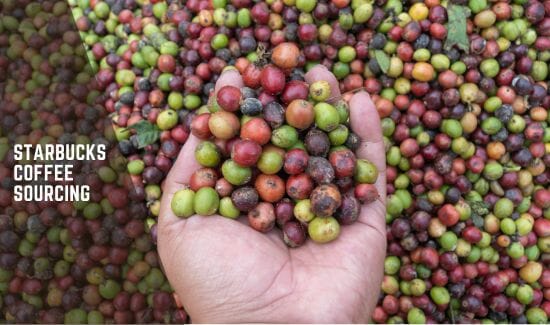
Starbucks’ Coffee Sourcing and Ethical Practices
Starbucks has always placed a strong emphasis on ethically sourcing its coffee beans. The company is committed to ensuring that its coffee is grown and harvested in a responsible and sustainable manner. This means working closely with farmers and suppliers to adhere to fair trade practices, support worker rights, and protect the environment. Starbucks also invests in training and education programs for coffee farmers, helping them improve their crop quality and yield while promoting sustainable farming practices. By prioritizing ethical sourcing, Starbucks not only ensures the production of high-quality coffee but also contributes positively to the well-being of the communities where the coffee is grown.
Sustainability is a key component of Starbucks’ coffee-sourcing practices. The company understands the importance of minimizing its environmental impact and has made significant efforts to do so. Through initiatives like the Coffee and Farmer Equity (C.A.F.E.) Practices, Starbucks promotes sustainable farming techniques, water conservation, and biodiversity preservation. These practices serve to protect ecosystems, promote the long-term viability of coffee farms, and secure the future of the coffee industry.

Innovative Marketing Strategies
Starbucks is well-known for its innovative marketing strategies, which have played a significant role in the company’s remarkable success and dominance in the coffee industry. One strategy that contributed to Starbucks’ market capture is the emphasis on creating a unique and inviting atmosphere in their stores. From the comfortable seating and ambient music to the aroma of freshly brewed coffee, Starbucks mastered the art of creating an exceptional customer experience that kept people coming back for more. By prioritizing not just the quality of its coffee, but also the overall ambiance of its stores, Starbucks differentiated itself from other coffee chains and established a strong brand identity.
Furthermore, Starbucks understands the power of partnerships and collaborations in reaching a broader consumer base. The company has successfully formed alliances with various well-known brands like Apple, Spotify, and Oprah Winfrey, leveraging their popularity to expand their reach and capture new markets. For instance, Starbucks partnered with Apple to promote the use of its mobile app, allowing customers to conveniently order and pay for their drinks through their mobile devices. By aligning themselves with reputable and influential partners, Starbucks extended its brand presence beyond the coffee shop and into the digital realm, ensuring continuous engagement and loyalty from its customers.
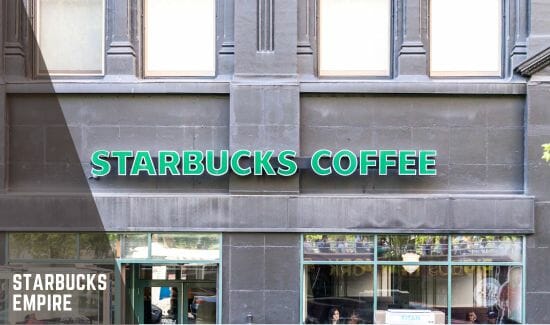
Expanding the Starbucks Empire: Franchising and Partnerships
Starbucks has successfully expanded its empire through strategic franchising and partnerships. By entering into partnerships with established companies, Starbucks has been able to tap into new markets and reach a wider customer base. One example of this is the partnership with Nestle, which allowed Starbucks to distribute its products in grocery stores globally. This partnership has not only increased Starbucks’ visibility but also provided customers with the convenience of enjoying their favorite Starbucks coffee at home.
In addition to partnerships, Starbucks has also used franchising as a method of expansion. By franchising its stores, Starbucks has been able to enter new territories and penetrate markets that may have been challenging to enter on its own. Franchising allows local entrepreneurs to bring the Starbucks experience to their communities, while also providing them with the support and resources needed to succeed. This strategy has been particularly successful in international markets, where Starbucks has seen rapid growth and established a strong presence. Overall, through franchising and partnerships, Starbucks has been able to expand its empire and capture new markets, solidifying its position as the leading global coffee brand.
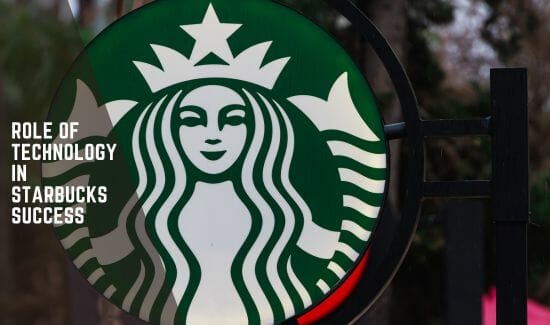
The Role of Technology in Starbucks’ Success
In today’s fast-paced world, technology has become an integral part of every business’s success, and Starbucks is no exception. With the rise in mobile and online platforms, Starbucks has effectively leveraged technology to enhance its customer experience and streamline its operations. One of the key ways technology has played a role in Starbucks’ success is through its mobile ordering and payment system.
The introduction of the Starbucks mobile app revolutionized the way customers order and pay for their favorite drinks. By simply downloading the app and linking it to their Starbucks account, customers can conveniently order ahead, customize their drinks, and pay using their smartphones. This not only saves time for customers who would otherwise wait in line, but it also allows Starbucks to efficiently manage its in-store traffic and streamline the order fulfillment process. The mobile ordering and payment system has become so popular that it now accounts for a significant portion of Starbucks’ sales, highlighting the importance of technology in driving the company’s success.

Social Responsibility and Community Engagement: Starbucks’ Impact Beyond Coffee
Starbucks has not only established itself as a leader in the coffee industry but has also made a significant impact beyond coffee through its social responsibility and community engagement initiatives. The company has been committed to sustainability and has implemented various environmental practices to minimize its footprint. From using renewable energy sources to promoting recycling and reducing waste, Starbucks has consistently taken steps to be a responsible corporate citizen.
Additionally, Starbucks has actively worked towards improving the communities it operates in. Through its Starbucks Foundation, the company has invested in various educational programs, particularly focused on providing opportunities to underserved youth. Starbucks’ commitment to diversity and inclusion is reflected in its initiatives aimed at creating job opportunities for refugees, veterans, and people from marginalized communities. By actively engaging with and positively contributing to the communities it serves, Starbucks has not only built a brand that stands the test of time but has also set an example for other corporations to follow.

Lessons from Starbucks: How to Build a Brand That Stands the Test of Time
Starbucks, undoubtedly, has set an exemplary model for building a brand that withstands the test of time. One of the key lessons we can learn from Starbucks is the importance of staying true to your vision and delivering a consistent experience. Starbucks’ commitment to quality coffee and creating a unique coffeehouse atmosphere has been unwavering since its inception. By prioritizing the taste, aroma, and ethical sourcing of their coffee beans, Starbucks has managed to cultivate a dedicated customer base who appreciate the value of a premium coffee experience.
Moreover, Starbucks has excelled in establishing emotional connections with its customers through exceptional customer service. The baristas at Starbucks are not just employees, they are passionate ambassadors of the brand who are genuinely dedicated to providing personalized service to each customer. This commitment to going above and beyond in ensuring customer satisfaction has forged strong brand loyalty. By investing in the training and development of their staff, Starbucks has successfully created a culture that sets them apart from their competitors, making their customers feel valued and appreciated.
FAQs:
What was Starbucks’ vision for quality coffee?
Starbucks’ vision was to offer customers high-quality coffee that was sourced ethically and roasted to perfection.
How did Starbucks create a unique coffee experience?
Starbucks achieved a unique coffee experience through its store design and atmosphere, providing a cozy and inviting environment for customers to enjoy their coffee.
What was Starbucks’ commitment to customer service?
Starbucks placed a strong emphasis on customer service, aiming to create a friendly and personalized experience for every customer that walked through their doors.
What were Starbucks’ coffee sourcing and ethical practices?
Starbucks focused on sourcing high-quality coffee beans from around the world while ensuring fair and ethical practices, including supporting farmers and promoting sustainability.
What innovative marketing strategies did Starbucks use?
Starbucks utilized innovative marketing strategies to capture the market, such as creating a sense of community, leveraging social media, and introducing loyalty programs.
How did Starbucks expand its empire?
Starbucks expanded through franchising and partnerships, allowing them to rapidly increase their presence and reach customers in various locations.
What role did technology play in Starbucks’ success?
Technology played a significant role in Starbucks’ success, with initiatives like mobile ordering, digital loyalty programs, and advanced coffee brewing technology enhancing the customer experience.

As a dedicated blogger, I share insights, tips, and knowledge on all things caffeinated and beyond. I firmly believe that a well-brewed cup of coffee or a skillfully crafted cocktail has the power to unite people and ignite engaging conversations.

